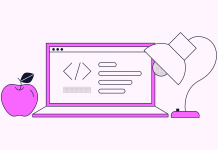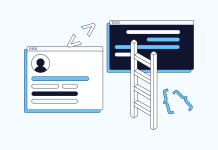
If you’re a new developer, you’ve probably run into the term XML and wondered what it stands for and how it’s used. The fact is that no matter what programming language you’re learning, you may have to know XML, but it’s not a programming language itself. Let’s look at what XML is, why it’s useful, and what exactly it’s used for.
What is XML, and why is it important?
XML stands for eXtensible Markup Language. It’s a language that’s used to describe data. Data stored in XML is known as being “self-defining.” This means that the structure of the data is embedded within the data itself.
Much of the information you access on computers is not stored as the final result you see in a web browser, mobile application, or desktop application. Instead, it exists in a text-based format.
Using text to store data is here to stay, but without a standard structure for this data, it’s hard to share it between applications. Without data standards, custom code would have to be written to parse it for each application accessing this data, and each new data set would need its own custom code.
Here’s an example of valid XML:
Bob Janice Reminder Don't forget to take out the garbage! The XML above is valid because a tag surrounds each piece of data describing what it is. This allows developers to store context along with their data in a standard, structured format.
Because XML has standards, it can be parsed and interpreted by all types of programming languages and applications without errors or misconfigurations. The XML example above could be used between a variety of messaging apps that know its structure.
What is XML used for?
XML is a format to store data along with its structure. This feature makes it useful for many things, including transferring data, formatting documents, creating layouts, and more. Let’s take a closer look at what XML is used for.
Data transfer
Just about every application needs some way to store and retrieve data. This usually occurs over the Internet using an API (Application Programming Interface). Back-End Engineers create APIs that run on web servers.
The same API can be used by many applications, including web apps, desktop apps, and mobile apps, to save and access data in a database. A standard format for this data makes this possible.
XML is one format programmers use to transfer data in a structure that can be parsed by all these diverse applications, and it’s commonly used for creating APIs. SOAP and XML-RPC are two types of XML APIs used in web services. Any application that connects to either of these APIs only has to know the format to use the data it contains.
Formatting documents
Web pages are HTML documents, and HTML is a form of XML. HTML is processed by a web browser, which then presents it in a visually pleasing format. The tags within an HTML document define specific types of elements, like headings, paragraphs, images, and more. The browser knows how to render these elements based on these tags.
HTML also stores contextual information about the data it contains in the form of attributes that include ID and class. CSS works with HTML to apply specific styles based on these attributes, like making a heading red or setting the font for a paragraph.
This is only one example of using XML for formatting. PDF files, PostScript files, Microsoft Word documents, PowerPoint documents, and RTF text files are also stored as XML. When you open these files in their default application, it parses this XML, formats it, and gives it the style you see on your computer screen.
Web searching
Search engines have evolved over the years. Originally, they didn’t do much more than determine if a web page contained the phrase you were looking for. Now, they use HTML (XML) tags to make searches more accurate.
An example would be searching for a book by your favorite author. Say you were searching for Mark Twain. By parsing the
Creating layouts
Every layout in an Android mobile application is created in XML. These layouts determine where data should be rendered on the screen of the phone. Common Android layouts include the Linear Layout, which tells the app to align the content on the screen horizontally or vertically, the Frame Layout, which is designed to contain other layouts dynamically, and the List layout, which displays items you can scroll through.
Storing configuration data
XML also stores the data used to configure an application. In Microsoft Excel, XML holds all the information contained in a spreadsheet. Not just the data, but also the definitions of the columns, the format of the fields, any calculations they use, and more. Android apps not only use XML for layouts but also to store the colors, styles, and dimensions that the app will use.
Where to learn more about XML
XML is a relatively simple language to learn. You can learn XML by itself, but it’s much better to learn it in tandem with a programming language to process and use the data that it stores.
XML is used in front-end web development because HTML is a form of XML. XML is also is used in back-end web development because some APIs use it to transfer data in a standard format. Android applications also depend heavily on XML to create layouts and store configurations, so you should learn XML if you’re interested in mobile development.
Every programming language you can think of either has built-in ways to use XML or third-party libraries that make it possible, so when you choose a programming language from our course catalog, there’s a good chance you’ll run into some XML.









